Biomechanics of the Scapulohumeral Relationship
Dr. Mauro Lastrico
Biomechanics: scapulohumeral relationship
Dr. Pt Mauro Lastrico
Excerpt from:
"Musculoskeletal biomechanics and Mézières method"
Author: Dr. Mauro Lastrico
Marrapese Publisher
The position inside the glenoid cavity and the movements of the humerus are controlled by the scapulohumeral muscles, brachioscapular muscles, costobrachial muscles, and latissimus dorsi. These muscles are asymmetrically distributed and have different vector potentials, resulting in dominances.
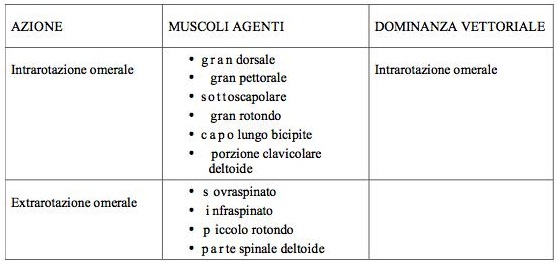
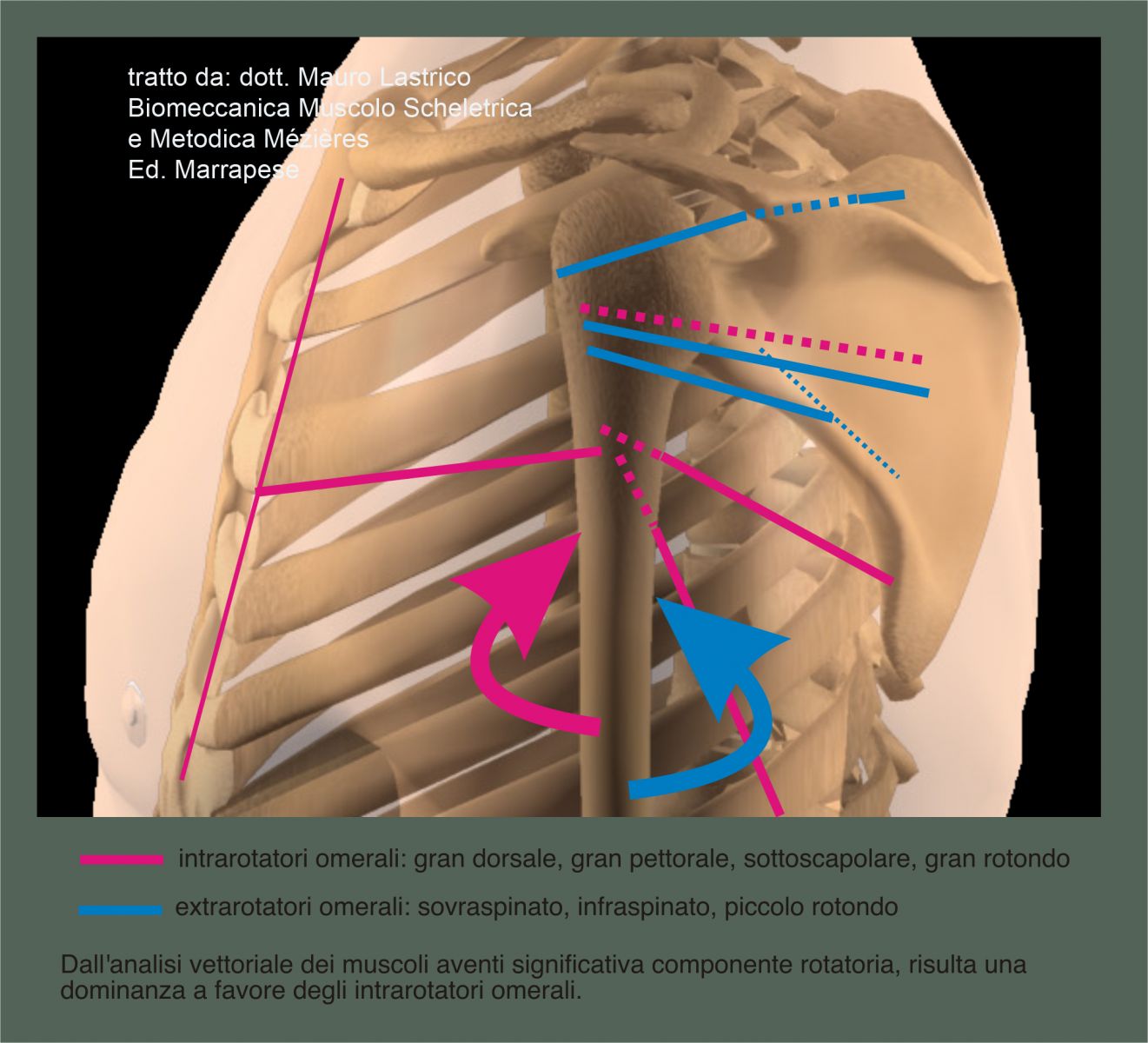

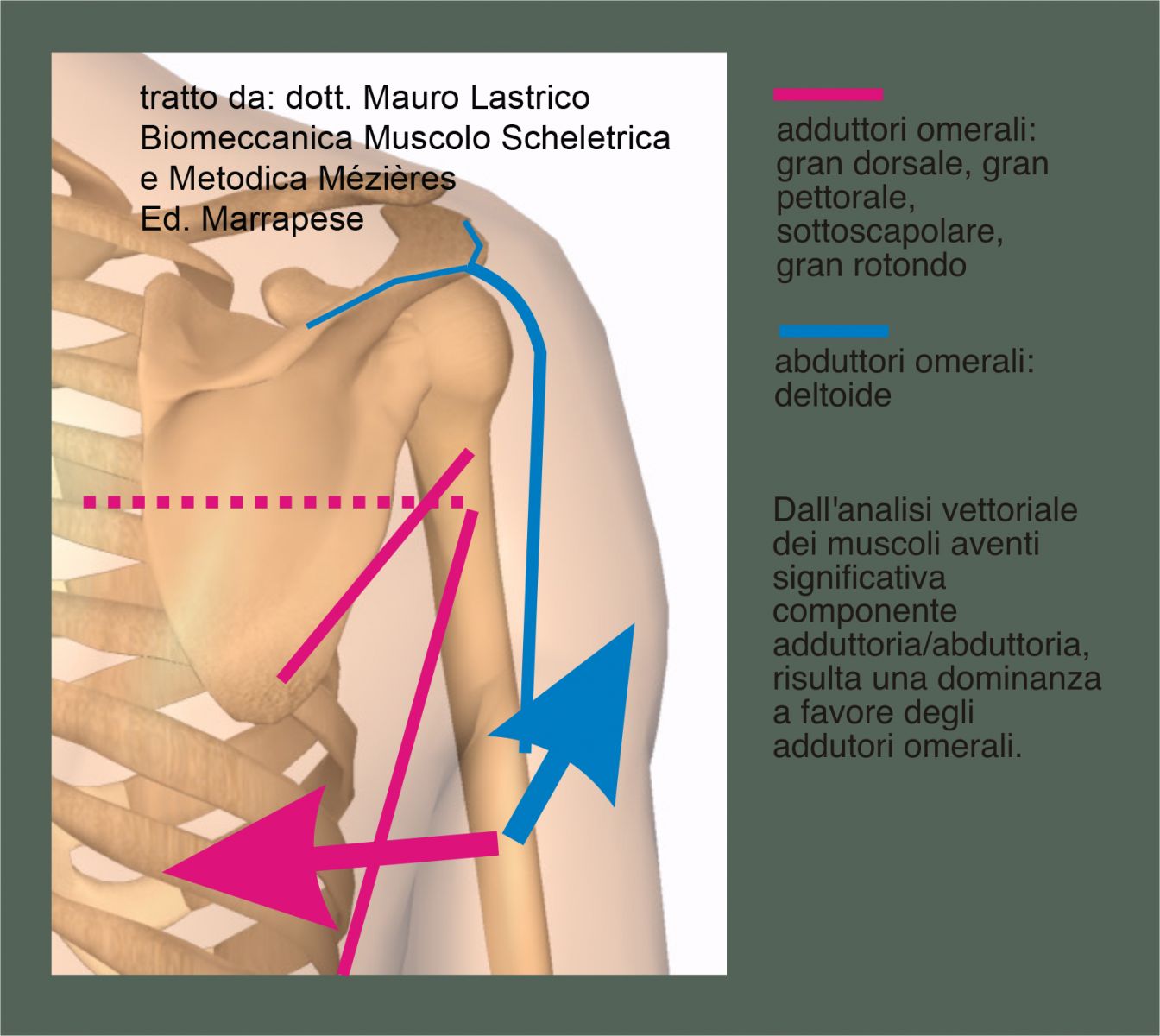
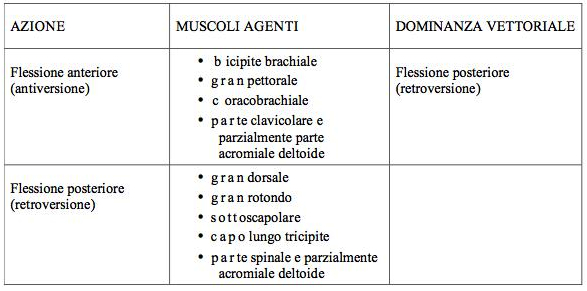

The overall dominance is therefore in adduction, internal rotation, and retroversion of the humerus.
The overall resultant positioning of the humeral head inside the glenoid cavity of the scapula is internal rotation, anteriorization, and depression if the longitudinal fibers of the latissimus dorsi prevail, elevation if the horizontal fibers of the latissimus dorsi, deltoid, and biceps brachii prevail.
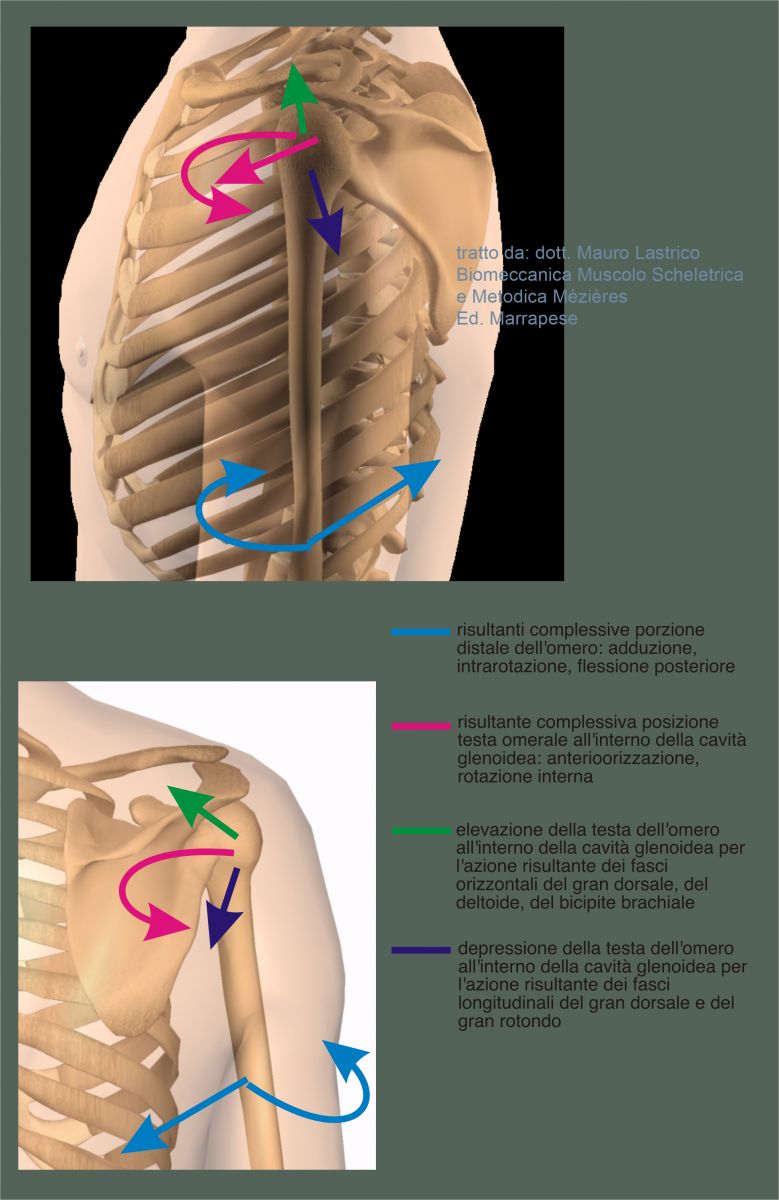
In vector logic, impairment of monoarticular muscles, such as the supraspinatus, is caused by the excessive tension these muscles undergo in their attempt to balance opposing forces with greater vector potentials.
Using the same vector logic, therapeutic action will aim to restore force balance not by strengthening the underdominant muscles (in the example, the supraspinatus), but by reducing the excessive tension of the dominant muscles.
In the absence of peripheral neurological pathologies or other conditions interfering with muscle contraction, underdominant actions will not be hindered or limited by "weakness" of agonist muscles, but by excessive tension of antagonists.
Copyright © 2025 AIFiMM Formazione Mézières Provider E.C.M. n. 1701. All rights reserved.



